
Wind-powered ships, food scents and forest guardians vie to lead research advances (EU Research Outlook 2024)
Wind-powered ships, food scents and forest guardians vie to lead research advances
From sail-powered tankers and new food habits to forest-protecting hedges and data-driven healthcare, 2024 promises to be a big year in EU science.
Rogier Eggers wants today’s ships to go back to the future. A senior project manager at Dutch maritime research institute MARIN, Eggers leads the EU-funded OPTIWISE project investigating how wind power can be harnessed to propel cargo vessels, passenger liners and tankers. He has studied ship design for the past 15 years while being a windsurfing and sailing enthusiast.
‘It was a mixture of hobby and professional interests initially. I worked on some sailing-yacht projects, so when the idea of using wind to save energy in shipping appeared it made sense for me to get involved. This was at a time when wind prolusion wasn’t really taken seriously in the industry, but emissions regulations mean that ship owners are increasingly interested in wind from an economic perspective. Look at the speeds that yachts achieve in the America’s Cup. There is obviously a lot of free energy out there.
‘We have weather predictions that are much more accurate than times past, allowing ships to take the route with the most favourable wind. There is the potential for more than 50% of a ship’s propulsion to come from wind. In late October and early November 2023, a ship using sails made its first oceanic crossing to deliver rocket parts for the European Space Agency to French Guiana and we expect larger ships to be built in future.
‘There will be progress in 2024 for sure with a few more ships being launched, but even more being designed and construction starting on some ships with sails, rotors, suction wings and kites to take advantage of wind. We’ve seen real acceleration this year, with the number of installations achieved in one year the same as in the last 10.’
Read: Ships harness wind for voyage to a cleaner future

Rogier Eggers
For Dr Janina Seubert, it’s all about scents and sensibilities. A cognitive neuroscientist at the Karolinka Institute in Sweden, she is researching the role of smell in shaping public preferences towards foods. Seubert leads the EU-funded OLFINK project into how flavour preferences are formed in the human brain and, as part of efforts to make diets healthier and more environmentally sustainable, plans in a future initiative to assess the consumer potential of a protein derived from mealworm.
‘When people come to Sweden for the first time and eat salt liquorice, they recognise the liquorice aroma but can be shocked when they taste such saltiness. I was fascinated by how the sense of smell creates emotions and stimulates our appetites. If we see a menu with pictures in a restaurant, it doesn’t really create the same level of craving as if there’s a delicious smell of bread or noodles or sauce coming from the kitchen. We need smell to create this full-blown craving for food.
‘If we smell vanilla, for example, we have a sensation of smelling sweetness. We’re thinking that over time odours known to go with certain tastes amplify the taste in the insular cortex region deep in the brain. But we are also asking where memory comes in. Most foods we encounter fit a category such as sausage or cheese, but we want to know if a range of acceptable flavours exists and whether people learn to be more accepting when food tastes different from their expectations.
‘The flavour of the mealworm is not unpleasant. What makes it unpleasant is the way we think about it. We’re asking if there are ways to present it so that people want to consume it. People often keep eating foods that are not good for them and have a hard time with foods that are good for them. We want to investigate why people are so interested in ultra-processed foods and find it difficult to switch to healthier options. We can apply this knowledge to situations where people overeat. Volunteers in a brain scanner will be exposed to familiar foods in liquid form, with a novel aroma and some artificial sweetener. We will investigate whether amounts of calories influence how quickly people develop a preference for a new aroma and see whether this changes with their need for calories – by comparing people who are hungry and full.’
Read: New foods can go from yucky to yummy as people’s perceptions evolve

Dr Janina Seubert
Christophe Orazio is something of a forest guru – an expert on woodlands who is also determined to protect them from threats including climate change. As chief executive officer of the France-based European Institute of Planted Forest, Orazio co-leads the EU-funded SUPERB project shoring up a large pine forest in the southwest of the country by planting broadleaved hedgerows across 20 000 hectares. The hedgerows are meant to shield the pines – planted during Napoleonic times – from storms, drought, wildfires and even pests that may increase as global temperatures rise while aiding biodiversity as home to birds, mammals and other critters.
‘We had big fires last year because of how warm and dry it was. We previously had warmer years and we had drier years, but never the two at the same time. Fire is going to be a big challenge for forestry in France, but it is not the only concern caused by climate change.
‘Threats from new pests include the spread of a moth infecting maritime pines, while another moth infects oaks. It can weaken them by removing part of their leaf cover. Two years ago, it was very bad on pines. Spruce forests are suffering now, but next on the list might be oak and that would be a big deal because 65% of our forests are oak. If droughts become more frequent, pedunculate oak and a large part of our forest landscape could be transformed in the next 20 to 30 years.
‘Around 10 to 15 years ago the main concern of foresters was how to make as much money and wood as possible. Now, forest owners are concerned about making sure that the forests will grow and are still alive in 30 to 40 years. There is also pressure from the public to protect biodiversity and increase the resilience of forests, so there is now a strong willingness to test new things. We are testing dozens of tree species in a climate gradient from the UK to Spain to simulate climate change and help forest managers select trees for the future and, as part of another project, we are planting mixed plantations with rows of pine and birch. The idea of using hedgerows to protect planted forests is already taking off among some forest owners, even before the project results come out.’
Read: Europe seeks flourishing forests through restoration

Christophe Orazio
Dr Christos Ntanos is championing the use of artificial intelligence (AI) to help people with complex brain disorders. As research director at the Decision Support Systems Laboratory at the National Technical University of Athens in Greece, he leads an EU-funded project called MES-CoBraD that is taking patient data collected by doctors and training AI to help diagnose neurological disorders such as epilepsy and dementia. The overall goal is to deliver faster diagnoses and personalised care.
‘We use medical data from patients, collected during regular visits to their doctor or hospital, and then we analyse it. This can include lab results, medical scans, brain waves, sleep patterns and questionnaires. Then we design and train AI to think like an expert, make diagnoses and suggest treatments.
‘Clinicians were once viewed as gurus roaming hospital corridors and giving out infallible prophesies like oracles of old. Medical practice is more nuanced and down to earth these days and younger doctors recognise how technologies such as AI can improve their work and their patients’ prospects.
‘Their role will change, with clinicians spending less time meticulously going through lab results and significantly more time with their patients – just like how automation in commercial aircraft has removed the flight engineer from the cockpit and shifted more of the pilots’ focus on safety and communication. The year 2023 saw an increase of public awareness of AI and a revival of ethical debates around its use. However, when patients and family members were interviewed about AI diagnostic tools at King’s College Hospital in London, they were reluctant to discuss much about ethics, privacy or disputes about humans versus machines. Their priority was the health of their loved ones. This why we expect to soon see significantly more AI and other cutting-edge technologies in everyday healthcare and more acceptance of the role they can play to help patients.’
Read: Brain disorders trigger search for new clues and cures

Dr Christos Ntanos
Berta Gonzalvo makes no secret about her enthusiasm for plastics – but not ordinary ones. Research director at the Aitiip Technology Centre in the Spanish city of Zaragoza, she is focused on developing plastics from unconsumed foods such as lemon peel and corn starch. High-performance industrial materials emerged from food waste in the EU-funded BARBARA project that Aitiip led, signalling stepped-up innovation in the European bioeconomy to find outlets for the one-third of food produced by humans that never gets consumed.
‘It is now possible to make polymers as well as additives, fibres and dyes from food and farm waste. In our project, we were able to make high-performance materials that could go into cars – into the fascia and door handles. Now we are running projects for exterior parts that must have good mechanical properties such as the bumper and mirror covers.
‘We are going to be producing bioplastic parts for cars in the next two to three years. The amount of bioplastic parts will increase with time. We are moving forward with new bioplastics and new biofibres that could be used around the batteries of the next generation of electric vehicles. We are even developing a new generation of carbon fibres based on natural resources including lignin from wood.
‘But the initial market opportunity for bioplastics in industry is for flexible packaging and rigid packaging. We will need to do more than that and replace much more plastics from fossil fuels, such as the high-performance materials used in many car parts. Europe’s strategy is for circular biobased materials, so we will need to have novel technologies and novel materials to meet demand in future.’
Read: Lemon peel, flax fibres hold keys to eco-friendly car parts

Berta Gonzalvo
The views of the interviewees don’t necessarily reflect those of the European Commission. If you liked this article, please consider sharing it on social media.

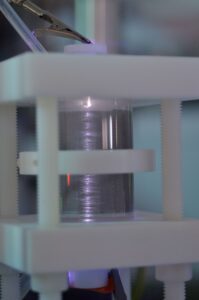

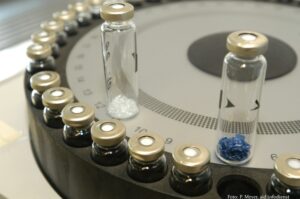

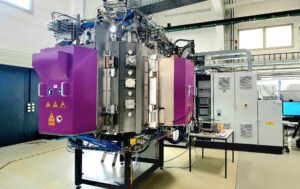


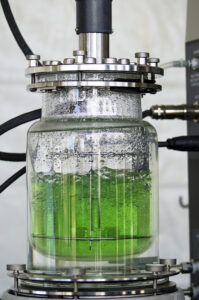


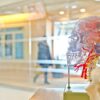

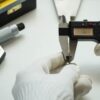
Wind-powered ships, food scents and forest guardians vie to lead research advances (EU Research Outlook 2024) 0 reviews
Login to Write Your ReviewThere are no reviews yet.